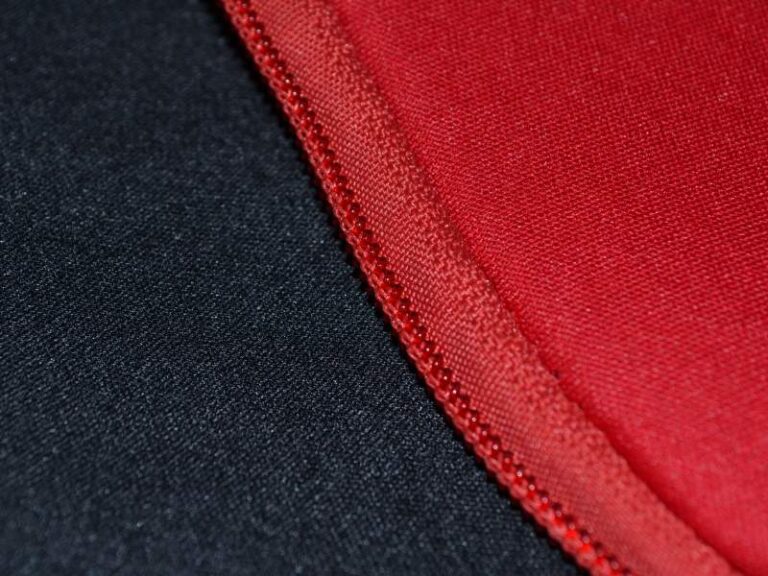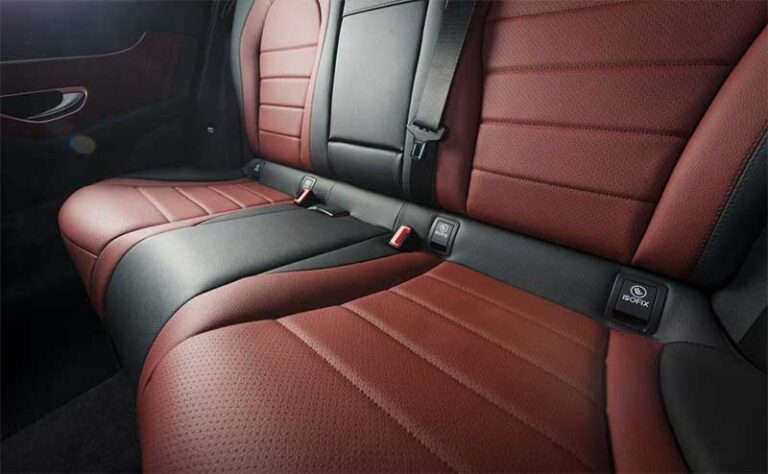Which is Better: EPDM or Neoprene? Discover the Difference!
Epdm is better than neoprene due to its superior resistance to weathering and ozone exposure, making it more durable and reliable. With its excellent performance in extreme temperatures and longer lifespan, Epdm outperforms neoprene in various industrial applications.
When it comes to choosing the right material for your project, it’s crucial to consider their specific characteristics and performance. We will delve into the key factors that set Epdm and neoprene apart.
We’ll explore their individual strengths, drawbacks, and applications to help you make an informed decision. So, let’s dive right in and discover which material stands out in terms of durability, resistance, reliability, and overall performance. By the end, you’ll have a clear understanding of whether Epdm or neoprene is the better choice for your specific needs.
The Essentials Of Epdm
The chemical composition and unique features of EPDM make it a versatile and highly desirable material in various applications. EPDM, or Ethylene Propylene Diene Monomer, is a type of synthetic rubber known for its excellent resistance to weather, ozone, UV rays, and extreme temperatures. The unique combination of ethylene, propylene, and diene monomers gives EPDM its remarkable properties.
In terms of pros and cons, EPDM offers numerous advantages. It has excellent resistance to water, steam, and other chemicals, making it ideal for use in plumbing and sealing applications. EPDM is also known for its durability, which enables it to withstand outdoor elements and mechanical stress. However, it may not be suitable for certain oils, fuels, and solvents.
EPDM’s compatibility with different environments is another key factor to consider. It performs well in both high and low-temperature environments, making it suitable for a wide range of industries and climates. EPDM is commonly used in automotive applications, roofing systems, electrical insulation, and weather sealing due to its outstanding performance in extreme weather conditions.
Neoprene Unveiled
Neoprene, a synthetic rubber material, is widely used in various applications due to its unique properties. Neoprene is composed of polymer chains made of chloroprene monomers, giving it excellent resistance to oil, chemicals, and heat. Its inherent flexibility, durability, and high tensile strength make it suitable for diverse applications ranging from wetsuits to automotive components.
Neoprene offers several advantages, such as its resistance to ozone and weathering effects, making it ideal for outdoor applications. Its ability to maintain flexibility in a wide temperature range (-30°C to 120°C) further enhances its utility. However, Neoprene does have limitations. It is not suitable for applications requiring resistance to strong acids, solvents, or ketones. Additionally, it is less resistant to petroleum-based oils compared to other rubber materials like EPDM.
Neoprene finds its optimal use in applications that require flexibility, cushioning, and resistance to oil, chemicals, and heat. Some common applications include gaskets, seals, hoses, sporting goods, and electrical insulation.
Analyzing Durability And Longevity
Epdm and Neoprene are both popular choices for various applications due to their durability and longevity.
Resistance To Weathering, Uv, And Ozone
Both Epdm and Neoprene exhibit excellent resistance to weathering, UV, and ozone. They are formulated to withstand harsh outdoor conditions, including exposure to sunlight and extreme temperatures. This makes them ideal for outdoor applications such as roofing, seals, and gaskets.
Wear And Tear Comparison Over Time
In terms of wear and tear over time, Epdm and Neoprene have slightly different properties. Epdm is known for its exceptional resistance to aging and degradation. It has a longer lifespan and can withstand exposure to chemicals, oils, and solvents. Neoprene, on the other hand, is highly resistant to physical abrasion and is often used in applications where mechanical stress is a concern.
Overall, when it comes to choosing between Epdm and Neoprene, it depends on the specific requirements of your application. Both materials have their unique advantages and should be evaluated based on factors such as environmental conditions, chemical exposure, and mechanical stress.
Temperature And Chemical Tolerance
Epdm and Neoprene are both popular synthetic rubber materials used in various applications, but they have different qualities when it comes to temperature and chemical tolerance.
| Epdm | Neoprene | |
|---|---|---|
| Performance at extreme temperatures | Epdm exhibits excellent resistance to high and low temperatures, with a temperature range of -50°C to 150°C (-58°F to 302°F). It can withstand extreme weather conditions, making it suitable for outdoor applications. | Neoprene also has good resistance to both high and low temperatures, with a temperature range of -35°C to 125°C (-31°F to 257°F). It maintains its flexibility and performance in various temperature conditions. |
| Resistance to oils, acids, and alkalis | Epdm has excellent resistance to alkaline and acid-based solutions. It is also resistant to oils and greases, making it suitable for use in automotive applications. | Neoprene offers good resistance to oils, acids, and alkalis. It has a broad range of chemical compatibility, which allows it to be used in applications where exposure to different substances is common. |
Economic And Environmental Impact
Epdm and neoprene have distinct economic and environmental impacts. Understanding the differences between the two materials will help determine which is better for specific applications.
Economic and Environmental ImpactCost-effectiveness and overall value: When comparing the two materials, it is important to consider their cost-effectiveness and overall value. Both EPDM and neoprene offer various advantages, but EPDM tends to be more cost-effective in the long run. It has a longer lifespan and requires less maintenance, reducing the overall costs associated with replacement and repairs. Neoprene, on the other hand, may have a higher upfront cost but offers excellent durability and resistance to weathering.
Eco-friendliness and recyclability: Environmental impact is another crucial aspect to consider. Both EPDM and neoprene are considered environmentally friendly materials due to their low toxicity. However, EPDM is more recyclable and has a lower carbon footprint. It can be easily recycled and reused in other applications, contributing to waste reduction and promoting sustainability.
Matching Material To Function
For applications requiring sealing and insulation, it is vital to select the appropriate material to ensure optimal performance. Two popular choices in the industry are EPDM and Neoprene.
Epdm
EPDM (Ethylene Propylene Diene Monomer) is widely used in automotive and construction due to its excellent resistance to weathering, ozone, and UV radiation. It also offers good chemical resistance and maintains its flexibility even in extreme temperatures. With its outstanding durability and cost-effectiveness, EPDM is a preferred choice for sealing windows, doors, roofing, and various automotive components.
Neoprene
Neoprene, on the other hand, boasts excellent resistance to water, oil, and chemicals. It is particularly suitable for applications that require resistance to oil and grease, making it ideal for gaskets and seals used in automotive engines and machinery. Additionally, Neoprene exhibits good flame retardant properties, making it a popular choice in the construction industry for insulation purposes.
When deciding between EPDM and Neoprene, it is crucial to consider the specific requirements of your application. Whether you prioritize weather resistance, flexibility, chemical resistance or flame retardance, both materials offer unique properties that can match your needs.
Customizing For The Industry Needs
Choosing between EPDM and neoprene for industrial customization depends on specific needs. EPDM offers excellent weather, ozone, and temperature resistance, while neoprene provides superior oil and chemical resistance. Understanding the industry requirements is key to making the right choice.
Tailoring Material To Aerospace And Marine SpecificationsWhen considering the choice between EPDM and Neoprene, it is important to evaluate their suitability for various industry needs. Both materials offer benefits specific to their properties. In the aerospace industry, customization is crucial to meet stringent requirements. EPDM proves to be a reliable option with its exceptional resistance to heat, weathering, and ozone. On the other hand, Neoprene exhibits excellent chemical resistance, making it an ideal material for marine applications where exposure to harsh elements such as saltwater and oils is common. Specialty Adaptations For Unique Industrial DemandsIn certain industries with unique demands, slight adaptations can make a significant difference. EPDM, with its superior elasticity and electrical insulation properties, finds utility in industries like automotive, construction, and electrical. Neoprene, known for its excellent resistance to oil, gasoline, and flame, is extensively utilized in applications requiring fluid resistance and fire retardancy, such as the automotive and oil industries. |
Real-world Case Studies
Epdm and neoprene are two popular materials used in various applications. Real-world case studies have provided valuable insights into their comparative successes and failures. Testimonials and industry expert opinions shed light on the performance and durability of these materials in different scenarios. In the case of EPDM, several success stories have emerged, where its excellent resistance to weather, UV radiation, and ozone has proven crucial. Moreover, EPDM’s ability to withstand extreme temperatures and resist chemicals make it a preferred choice in the automotive, construction, and roofing industries.
However, some instances of EPDM’s failure have been noted, particularly in applications requiring high tensile strength or resistance to oil and solvents. On the other hand, neoprene has demonstrated notable success in applications requiring flexibility and resistance to abrasion, oil, and chemicals. It is widely used in manufacturing gaskets, hoses, and seals. However, its vulnerability to UV radiation and poor resistance to certain solvents limit its suitability in outdoor applications.
Considering the real-world experiences shared through testimonials and expert opinions, the choice between EPDM and neoprene depends on the specific requirements of the intended application. Evaluating factors such as weather exposure, temperature variations, chemical exposure, and mechanical stress is essential for making an informed decision.
Frequently Asked Questions Of Which Is Better Epdm Or Neoprene?
Is Epdm Or Neoprene A Better Choice For Outdoor Applications?
Both EPDM and Neoprene have excellent weather resistance, but EPDM is preferred for outdoor applications due to its superior UV resistance and long-lasting performance. Neoprene is better suited for indoor applications or environments with exposure to oils, chemicals, or extreme temperatures.
Which Material Offers Better Resistance Against Ozone And Weathering?
EPDM offers better resistance against ozone and weathering compared to Neoprene. Its unique molecular structure and high-grade synthetic rubber make it highly resistant to the damaging effects of UV rays, ozone, and other environmental factors, ensuring longer service life and minimal degradation.
Are Epdm And Neoprene Equally Resistant To Water And Moisture?
Both EPDM and Neoprene are highly resistant to water and moisture. However, EPDM provides better resistance due to its closed-cell structure, preventing water absorption. Neoprene, on the other hand, can absorb a small amount of water over time but still maintains good overall water resistance.
Which Material Is Better For Sealing Applications?
EPDM is a preferred choice for sealing applications due to its excellent compression set resistance and elasticity. It can provide a tight and long-lasting seal, even in demanding environments. Neoprene can also be used for sealing but is more commonly used for gaskets, insulation, and vibration damping applications.
Conclusion
Ultimately, the choice between EPDM and neoprene comes down to your specific needs and preferences. Both materials have their advantages and disadvantages, with EPDM offering excellent weather resistance and neoprene providing superior chemical resistance. By carefully considering the specific application requirements and consulting with experts, you can make an informed decision in selecting the better option for your project.
Ensure you prioritize factors like durability, flexibility, cost, and lifespan to choose the ideal material that will deliver long-term performance and value.
- Can I Get in a Taxi Without a Car Seat? - January 26, 2025
- Can I Get Chlamydia From a Toilet Seat? - January 26, 2025
- Can I Get an Uber With a Car Seat? - January 26, 2025






